A Walk Through Sunset Park with Leslie Stein
“Everything is beautiful. The world is ending, but it's ok. It's fine.”
“I’m sorry, are you going to Los Angeles because you’re nominated for a LA Times Book Prize?”
The year is 2018 and I’m drinking at The Gate in Park Slope. The bartender and I have been chatting away a lazy spring afternoon, but it’s slowly becoming clear to me that the trip she’s casually mentioned is no vacation, but is because she’s up for one of the most recognizable book awards in the country.
“That’s the one,” the bartender, whose name is Leslie Stein, responds. “Do you know it?”
At the time, I made my living talking about books on the internet. I did, indeed, “know it.” An even better ending to the story? A few weeks later, in that very same bar, we would be cheersing Leslie’s win—as she brought home the LA Times Book Prize in the Graphic Novel category for her book, Present.
Leslie and I’s relationship went from regular/bartender, to acquaintances, and then to friends. On top of being an artist and a writer, Leslie is also a musician and she often comes over to the building where I live to jam with my upstairs neighbor, John Wray. During the pandemic, Leslie and I would drink on my stoop, talking books and art and music. When I started walking regularly in the fall of 2020, Leslie—an avid walker herself—encouraged my new interest in rambling.
Usually a solo walker, I was delighted when Leslie Stein agreed to go on a walk with me. We will make our way through Park Slope—where we first met—past Green-Wood Cemetery and up into Sunset Park, where we’ll stop at a bar that Leslie is fond of while the sun does exactly as advertised.
Isaac: What do you love about Green-Wood Cemetery?
Leslie Stein: I discovered Green-Wood Cemetery about a year or two before the pandemic. It's such a beautiful place to walk. I like to look up the people who are buried in the cemetery—and watch the animals, mostly. Then, during the pandemic, it became a part of my daily routine. I would wake up, go running in Prospect Park, draw for five hours, and then come here for sunset and some meditation. Once I figured out that schedule, it made the pandemic slightly more manageable.
I: That's a lot of activity.
LS: I was trying to wear myself out. There was no socializing—I couldn’t go out at night—so I figured, best to take care of everything during the day, get my vitamin D, and go to sleep early. Then I’d wake up and do it all again.
I: If I remember correctly, having read I Know You Rider—you enjoy bird watching in Green-Wood cemetery too, right?
LS: I love the birds. There’re a few birds I follow that come back at different times during the year. There's an egret that comes in the summer—he hangs out at this one particular pond and I love seeing him. There’s the Argentinian parrots that live at the top of the main gate. There are hawks, and there's even an eagle—but I haven't seen him yet. Sometimes I bring binoculars, but I don't really know all that much about birds. I simply enjoy watching them.
I: Are you always alone when you’re in Green-Wood Cemetery?
LS: I go by myself, mostly, but every once in awhile I’ll bring somebody with me. It was a great spot to meet up with people during the pandemic. Prospect Park was always so crowded, so I would bring folks here. Some people really seemed to dig it, like me. But other people? It was kind of strange. They didn't seem that impressed by it. Which I don’t get, because I'm still so, so impressed every time I come here. Mainly, though, I’m here by myself.
I: Do you think some people get weirded out when they remember they’re walking on top of a hill that’s chock-full of skeletons?
LS: I think what was happening during COVID was you'd meet up with people you hadn't seen for a while and everyone was simply freaking out. We were all in a bad mood, whether we realized it or not. So maybe it was hard for them to get out of whatever mental state they were in and simply be in the moment, surrounded by all of this beauty.
I: How long have you lived in New York City?
LS: 20 years. I moved here when I was 19.
At first it was really hard to find an apartment. I was subletting month to month. My first actual, steady living situation was in Sunset Park on 49th Street, between 4th and 5th—near where we’re headed. It was the top of a converted brownstone, and I lived there with my friend Bruno—we both worked at Kim's Video and Music in Manhattan, which was quite a commute, but my rent was something ridiculous. $550 a month, maybe?
I: Unreal. What’s Kim’s Video and Music, for those that don’t know?
LS: Kim's was group of record and video stores in Manhattan. The last location closed in 2014, I believe. The one I worked at was called Mondo Kim's, it was a three story retail shop on St. Marks. The first floor was CD's, the second was DVD's, vinyl, and porn sales, the third floor was movie rentals. I worked on the second floor.
I: Was Kim’s Video and Music your first job in the city?
LS: Kim’s Video was my first job in the city, yes. But more than that. I moved here to attend art school, but Kim’s Video was my actual education—in film, music, and art—by simply meeting people. So many of the people I met at Kim’s have gone on to have amazing careers. I learned so much from all of them.
I: Were you all babies? All 19, or in your early 20s? Or were you the younger one of the bunch?
LS: I was the baby. It was me and a whole bunch of dudes. Most of them were, maybe 27? Mid to late 20s. So, that was fun. I mean, some of them were kind of mean to me at first, maybe because there wasn't a woman working on my floor for like five years prior, but also Kim's had a reputation for having an ornery staff.
I: I know exactly what you’re talking about.
LS: I got a lot of, “Well, what do you know about T-Rex?” To which I was able to respond, “Plenty.” So I eventually found my place. I feel like it's not cool to be mean anymore, but there was definitely a time in the 90s—in the late 90s, early 2000s—where being kind of mean—
I: Kind of elitist. Kind of, “Oh, you don’t know about THIS?”
LS: Exactly. That made you kind of cool. But now nobody cares about that. I think it was a type of posturing that has, in a way, aged out.
I: How long did you work there?
LS: About two years. Which is how long I lived in Sunset Park.
I: Where’d you go after that?
LS: The East Village. Then Bushwick. Then Williamsburg. Then Park Slope, where I’ve lived ever since.
I: How long have you lived in Park Slope?
LS: Ten years. A decade.
I: Damn. So you’ve really seen the neighborhood change.
LS: I don't think it's changed that much, just the normal businesses coming and going. I’m down the slope a bit. Toward Gowanus. People are kayaking in the Gowanus Canal now—ok, that’s a change. One from which I will never recover.
I: No.
LS: Yes! There’s a dude who takes people on little kayaking or canoeing trips in the Gowanus Canal. When I first heard about it, I was bartending, and a man came in with a bunch of print outs trying to hype the business. Then, a little while later, I was walking over a bridge and I see people in kayaks in the Gowanus Canal. I remember thinking, “Wow. Anything really is possible, I guess.” I imagine this is not a sanitary activity.
I: Where are we headed?
LS: We’re heading to Judy’s in Sunset Park. The place is named after Sam—the owner—’s mother. Sam has amazing taste in wine and beer, so he hand selects everything in the place. I believe it’s Sam’s first bar. During the pandemic, Judy’s turned into a bottle shop, so people could come here and buy wine bottles to go, which was really nice. But now they’ve reopened as a bar, which makes me happy. It's so rare that you find a bar with really, really good wine that's not at all snooty. That’s what I love about Judy’s, everything is so, so good—but it isn’t antiseptic. It’s cozy. Everyone’s super friendly. It’s quiet. The menu is relatively cheap. Plus, I can write and draw.
I: You get work done?
LS: Yeah. In general, I write and draw in Sunset Park a lot. The neighborhood—much like Green-Wood Cemetery and Park Slope—is on top of a huge hill. Sunset Park, the actual park that the neighborhood is named for, is at the top of the hill and the view of Manhattan from there—and yes, the sunset—is spectacular.
So that's one of my favorite ways to spend a day. Do all my work, go to Green-Wood Cemetery, then walk up here to catch the sunset and then head over to Judy’s for a drink. That’s the walk we’re on now.
I: Did you write as a child? Did you draw? Were you always an artistic kid?
LS: Yeah, I was one of those kids. Always drawing. My mom tells this story from when I was in preschool. One day she picked me up and asked, “How was your day?” and I said, “Good. I’m an artist.” Simple as that. What I think happened was—in school I would sit and draw so, so intensely. My teacher must have said, “Oh wow, what a little artist you are,” or something like that, and I thought, “That's a cool word. I have no idea what it means, but I will own it. I will tell my mom. I am an artist.”
I remember in kindergarten, you’d have periods where you're supposed to make things with construction paper and stuff—arts and crafts. You'd be doing that for an hour. I specifically remember trying to make a lion head, and then the teacher said, “Ok, you don't have to do that anymore. You can go to recess.” So, all the kids got up and started running around and going crazy. While I was thinking, “What are you doing? No, let me finish my lion head.” I'd simply sit there and continue until it was done. So, that was always what I did. Then I started drawing comics around the age of six.
I: Six?
LS: Yeah, I did some with my brother where he would write and I would draw. And in middle school, I had a series called Leslie. My first autobiographical comic. I put all my friends in it, and my classmates really liked it. All the kids would come up to me and say, “Put me in your comic.”
I: That’s incredible. Did you distribute them?
LS: No, that was pre-zine knowledge! I'd simply show them to people in class. I had a little notebook filled with strips. In the comic, there was also a magical little bunny and a bird, and they would help me out. Mostly in gym class. For example, all the balls would be coming at me during a game of dodgeball, but then the bunny and bird would show up to help block the balls. Fun, cute little strips. Then in high school I discovered alternative comics and that’s when I realized, “Oh yeah, that’s what I want to do. I want to draw comics for the rest of my life.”
I: What comics were you reading in high school?
LS: Black Hole by Charles Burns. I remember thinking, “How did a human being do this?” I'm still not quite sure, actually. I loved Daniel Clowes. Debbie Drechsler was this amazing autobiographical comic artist who would draw about horrendous life events, but she drew them in this almost sweet, accessible way. That had a huge impact on me at the time.
After high school I moved across the country and went to the San Francisco Art Institute. I was in an interdisciplinary program, which basically meant you could do whatever you want. But I was showing the other students and teachers comics and it was mostly a conceptual art school. They were not well received. Which is when I moved to NYC.
I: You were in art school here too, right?
LS: Yes. I enrolled in a cartooning/illustration program and I was really excited to meet all these weirdos drawing next-level comics. But then I showed up and everyone was drawing Wolverine.
I: Ahhh, different sort of comic than you were thinking.
LS: We’d have critiques, too. That’s when when I started smoking a lot of pot before class. Getting really stoned and giving notes on people’s Wolverine drawings.
I: Can I be honest, though? I sort of want to see what Leslie Stein’s Wolverine would look like.
LS: I have drawn Wolverine.
I: Really?
LS: I had this year where I drew a comic page a day, and it came out as a journal—Fantagraphics put it out. It's called Bright Eyed at Midnight. So I simply drew during the night, whatever state I was in—because I was bartending a lot at the time. Sometimes I would come home at seven in the morning and say, “I'm still drawing.” One night I thought, “What would happen if I drew all superheroes?”
So I drew Rogue from X-Men, and I drew Superman, and a couple others. Then I put ‘em all up on Tumblr—or whatever the popular image sharing site of the time was—and I ended up selling all of the originals.
I: Can we see them?
LS: I’ll send you some.
I: Ok, so you you’re in New York and you’re going to Wolverine Drawing Academy—what was the school’s real name?
LS: SVA—School of Visual Arts.
I: When do you get serious about drawing autobiographical comics again, like you were doing in middle school?
LS: My junior year of SVA everyone in the illustration department was given a theme to work on—the school does this so students know what it’s like to work as a professional illustrator. “Here’s what you’re going to work on, no matter what.” My year the theme was “film noir,” and if you know any of my work at all you know that theme… isn’t really applicable. I love film noir, but it's not a realm where my work would have existed at the time. Every student was supposed to do 15 pages, it’s the big project for the semester. So I pitched the professor, “How about I do 48 pages of what I'm good at?” And my teacher said that was cool. So I did 50 pages of what I wanted to do, and then I won a grant to publish it.
I: Take that, Wolverine Drawing Academy! What was the grant?
LS: It was a Teenage Mutant Ninja Turtles grant.
I: Ok, now you’re just fucking with me.
LS: I’m not! Ok, it’s called the Xeric Grant. It’s set up for budding cartoonists and I drew this 50 page comic—I actually cut it out of construction paper. It's all collage. Then I submitted the pages to the Xeric Foundation and they gave me $5,000 so I could print it, after which I got distribution through Diamond Catalog. That comic wasn't very good, obviously, since I was so young. But the style was inventive, which is probably why I got the money. But that project was pretty much autobiographical, to answer your original question.
I’m a really good worker, but I was a terrible student because I refused to take any kind of direction. But luckily I had a professor who simply said, “Ok. You’re fine.”
I: I would argue that’s still true. I mean, not being a bad student—because you’re no longer a student—but refusing to take orders.
LS: I mean, that’s why I don’t illustrate. Illustration is how a lot of cartoonists get by. But you’re right. I don't want anyone telling me what to draw. I'd rather work at the bar. Which is what I still do.
I: So you get the grant. You self-publish your book. Do you graduate from Wolverine Drawing Academy?
LS: Not only did I graduate, I won an award for best cartoonist in the entire Wolverine Drawing Department. I have a medal.
I: No shit?
LS: I was the only woman in the whole department. I was kinda worried that was why they gave it to me at the time, but now I don't think so.
I: Same as at Kim's Video and Music.
LS: It's different now, 20 years later, but at that time, everything I was really interested in—playing music in rock bands, working at a record store, even bartending, to a certain degree, and especially drawing comics—it was mostly men. Which never bothered me, because I have two brothers, so I sometimes feel more comfortable with men than with women. That's kind of embarrassing to admit, but it's nothing I can help.
I: So what’d you do after you graduated—with a medal—from Wolverine Drawing Academy?
LS: Started the shitty job parade, man.
I: What was your first shitty job?
LS: Bejeweling cell phones and Sidekicks.
I: I'm sorry, what? In New York City?
LS: Remember Sidekicks, in the early 2000s?
I: Yes.
LS: So Lindsay Lohan, Paris Hilton, and folks like that, they would get them bejeweled—by hand—in different designs with Swarovski crystals. I did that.
I: On your own? For a store?
LS: I was in a warehouse-y loft in Midtown.
I: Holy shit.
LS: So that was my first horrible job. Then I worked at a dress shop—simply sat there and sold dresses in the East Village. Then I worked at a DVD distribution company doing mailroom duties and spreadsheets and shit. Then I worked as a food runner and then I finally started working as a bartender. I mean, I worked as a hostess, a manager, a waitress, a food runner, a bartender—I worked every front of the house position within the food industry.
I: Do you remember the first bar you worked at?
LS: It was called Mother's, on Graham Avenue in Williamsburg. Like Judy’s, it was beer and wine only—so it was really easy. No cocktails. All of my friends used to come in and sit at the bar, which felt stressful at the time because I didn’t want to get busted giving out free drinks. “I can give you one free drink, and I can give you one free drink, and I can give you one free”—etc.
That said, it was definitely one of the best times of my life. I lived 10 minutes from the bar. My practice space with my band was another 15 minutes away. We were playing lots of shows, I was drawing, I hadn't been published yet—but I felt like I was going to be.
It’s an interesting thing, that time before you're published, because you generally think that being published is going to change your life, so you have that optimism.
I: Hope.
LS: Yeah, I had a lot of hope.
I: Speaking of bad jobs, or weird jobs, or ‘tales of the strange’ as it were. Tumblr is something you mentioned, plus—to quote you directly—“whatever the popular image sharing site of the time was.” Something I wanted to ask you about is—
LS: Here we go.
I: The meme.
LS: Leslie as a viral meme.
I: I still see it used! To this day!
LS: It's a photo of me in bed with a guy, and I'm looking really mad at him, and he's staring off into space. So, people use it to say, “What's he thinking about?” She's thinking, “I bet he's thinking about...” I mean, it's been used so many times, I can't even think of a specific one.
I: She’s imagining, “He’s thinking about some other woman,” but what he’s really thinking about is, “Monster trucks.”
LS: Exactly. So, that photo was taken because I dated a guy in college who was a photographer, and Getty Images told him that they wanted photos. This is twenty years ago or so, before memes existed. Getty needed photos of couples arguing. So, the guy in the meme is my boyfriend-at-the-time's best friend, and my boyfriend said, “I'll use you two for this shoot and we’ll all make some money.” We took tons of photos, and in the end I made $200.
So he sells the photos to Getty. I figure, “I’ll never see those again.”
I: But then…
LS: But then memes became a thing. When it first became popular, I wasn’t even spending that much time on the internet. But people would stumble across it and send ‘em to me. “Leslie, this looks like you.” To this day, I’m still friends with the guy in the photo, so we’ll text ‘em to each other whenever we stumble across a good one. He sent me one last night, actually.
I: Can I see it?
LS: Here. They’re all so funny, because I have so much makeup on and I’m always made out to be the worst girlfriend.
I: Was this your first brush with viral fame?
LS: Well, my then boyfriend, who took the photo—he goes on to become a very successful photographer—well, I did a bunch of modeling for him. So the first photo he took of me that something happened with was a picture of me in a blonde wig on a couch in my underwear, which he sold to MTV. They in turn put it on the MTV building.
I: I’m sorry, what?
LS: There was a huge picture of me in my underwear—with my face obscured—on the MTV building in Times Square. It was up for a year.
I: Holy shit.
LS: The photo that became the meme was taken a little later after that. And there are others out there, too. Remember, most of the photos were sold to Getty, so they still pop up every now and again. Never my face, but a body part on a book cover or me in various states of undress in a magazine.
I: That’s wild.
LS: I think it’s hilarious. I'm not bothered by it at all. I still get a kick every time a friend texts me, “Is this you?”
I: Ok. Art. Comics. Modeling. Let's talk about music real quick. When did the music side start for you? Did you play instruments as a kid?
LS: I started playing guitar when I was 13. I was really diligent about it, but I didn't really play in any bands until college.
I: Do you remember what made you want to pick up a guitar?
LS: My love of rock and roll. Seriously. It’s a very simple answer, but it’s true. Jimi Hendrix!
I remember listening to Jimi Hendrix when I was 13—my brother got a CD from his friend. It was Live at Woodstock. We were in Arizona visiting my grandmother. My brother says, “Oh, I got this CD by this guy, Jimi Hendrix.” So I say, "“Put it on.” And he puts it on. I remember feeling, “What? This is what music can sound like?” Because in the 90s—up until that point—I was only listening to pop radio. And then I became obsessed. I had a Jimi Hendrix poster in my room. I had an altar to him. Candles everywhere. The whole nine yards.
That year my mother gave me a fire extinguisher for Christmas, because she was so worried about my room. Looking back, I get it. There were candles all over the place and a picture of a man setting a guitar on fire on the wall.
I: Safety first. So when did rock and roll obsession turn into you playing in a proper band?
LS: When I was in San Francisco I met a friend, and we started a Casio keyboard band. Then I moved to New York, and all the guys at Kim's Video were in bands, and I remember thinking, “How do I show them that I can do this, too?” So I got my hands on a four track and a bunch of pedals and I started making these weird, spatial songs with Casio keyboards and guitars and whatever I could find, really. I gave a copy to everyone who worked at the record store and then I started getting offers to come play with people. Not long after I started playing shows with friends and we eventually started to form a full band and played together for 10 years.
I: Any good band names?
LS: I mean, some terrible band names. The band I was in the longest was called Prince Rupert's Drops. Terrible, terrible band name. We were called The Woods for a few years, but there was another band called Woods and they put out a record before we did.
But it was all so much fun. I was playing bass for this guy, Miles Robinson, and ended up going on tour with him. We opened for TV on the Radio and Damien Jurado and a few other bands. I played with this totally crazy noise band, Jesus With Me. I played with a lot of different people.
I: Which is what the new book is based on, right? Going on tour? Traveling with a band?
LS: Yeah, it’s mostly based on my touring experiences, or stories that friends in bands have told me. The book sort of wrote itself, because I know all the beats of being on a tour. All I had to do was figure out where my characters were going to be and then I’d know what they’d be doing. “Oh, they're going to have to do their laundry at this point of the tour.” But the tour is simply a scaffolding to hang the story on. At its core, the book is a bunch of character studies and showing how these people interact.
I: What’s the new book called?
LS: Brooklyn's Last Secret. It was my COVID project. Well, I had a book come out in March, 2020, which was rough. So that’s how I spent the the first couple months of lockdown—doing whatever I could to promote that book without going anywhere, which meant doing phone interviews and then drinking margaritas while walking around Green-Wood Cemetery and listening to my headphones. After two months of that, I said to myself, “I need a project. I'm ready.”
I: “I'm getting too drunk in Green-Wood Cemetery.”
LS: It was kind of beautiful, in its own way. I was up here in Sunset Park and the sun was setting and I thought to myself, “Everything is beautiful. The world is ending, but it's ok. It's fine.”
I remember thinking about all of my friends who are musicians and had canceled their upcoming tours. About how nobody was getting together to play music, and how this whole scene that I was a part of was simply… low. Depressed. That’s when I thought, “Oh, I could start doing something on Instagram—these little vignettes about this band being on the road.” It started as an attempt to simply make my friends smile. A lil’ sense of escape and movement while we were all stuck. Then, when I started working on it, I realized that I wanted to have a more realistic portrayal of a band on tour. Because you always see it in movies, it'll be either be Almost Famous—where it's a big band and the story’s arc is very particular—or it’ll be Spinal Tap—a comedy—which I of course love. But I wanted this project to simply be, “This is how it is for a small band on tour.”
I: Road dogging.
LS: Exactly. So I started putting posting these lil’ strips, and people really liked them. Even better, I started really, really enjoying working on the project, because I felt, “Oh, what's the opposite of right now? I'm staring at a piece of paper in my apartment alone, but actually I'm on tour in a van with a band in North Dakota today.”
I: Let’s talk about the book you just mentioned, though—I Know You Rider—that came out in March 2020. A terrible time to have a book come out—but an incredible book that I absolutely love. So much of your art is autobiographical, but would you say that book is the most personal project that you've done?
LS: The most revealing, maybe. But I also think it seems that way because it's about abortion, which is a subject matter that's still so taboo. Even for people who are totally pro-choice. You simply don't talk about getting an abortion, which is exactly why I drew it.
At the beginning, I didn't really want to make the book. I had this feeling of, “Oh, this is going to suck. It's going to be really painful. And then I'm going to have to talk with strangers about it.” But part of the reason I created I Know You Rider was all the reasons that I didn't want to do the project. I felt I had the strength to do something in solidarity in this tiny, tiny little way that might actually be helpful to one person down the road—someone who finds the book in a store, or maybe likes my work already. The idea of someone picking up the book and saying, “Oh shit, she wrote about this,” kept me going.
What I didn’t realize was going to happen, was that I’d have that same feeling in a way, too. After the book came out, I found out about family members who had abortions and people I never would've known about who had abortions—because no one talks about it, again because it's so stigmatized—and that was incredibly powerful.
So that's why I did that book. It’s a short book. You can read it in one sitting. Plus there's a lot of humor, I hope, in there. I’m proud of it.
I: Was it tough to have such a personal book come out right when the pandemic started?
LS: I mean, more than the book—the politicalization of this topic is, simply put, such a fucking bummer. It takes away from the actual individual stories of real, living people. People who are going through this difficult time, and then are ostracized by an entire section of society for making decisions about their own health. It's extremely fucked up.
I was writing the book during the Kavanaugh confirmation hearings. Which… wasn’t subtle. But there were at least some conversations happening around reproductive rights at that time—and then COVID hit. Which was of course shitty for a litany of reasons, but one reason was that it really pushed aside those conversations. This mass pandemic happened and simply swept so much back under the rug. Then there was Amy Coney Barrett, and the Texas abortion ban in 2021. But still, everything felt, in a way, that it was taking a backseat to COVID.
I: You did some fundraising in 2021 around the Texas news, right?
LS: I did. I saw so much of this coming when I was working on I Know You Rider. At the time, though, I couldn’t have imagined how difficult it was going to be for people affected by the new Texas law.
Anyway, like you said, the book came out in March of 2020. So I still had a box full of ‘em by my doorway in my apartment. In an attempt to try and do, I don’t know, something I posted on Instagram that I’d send signed copies of the book along with original artwork to anyone who made a donation to abortion funds. In the end we raised $1,500.
I: That must have felt good.
LS: I mean, I wish it was more.
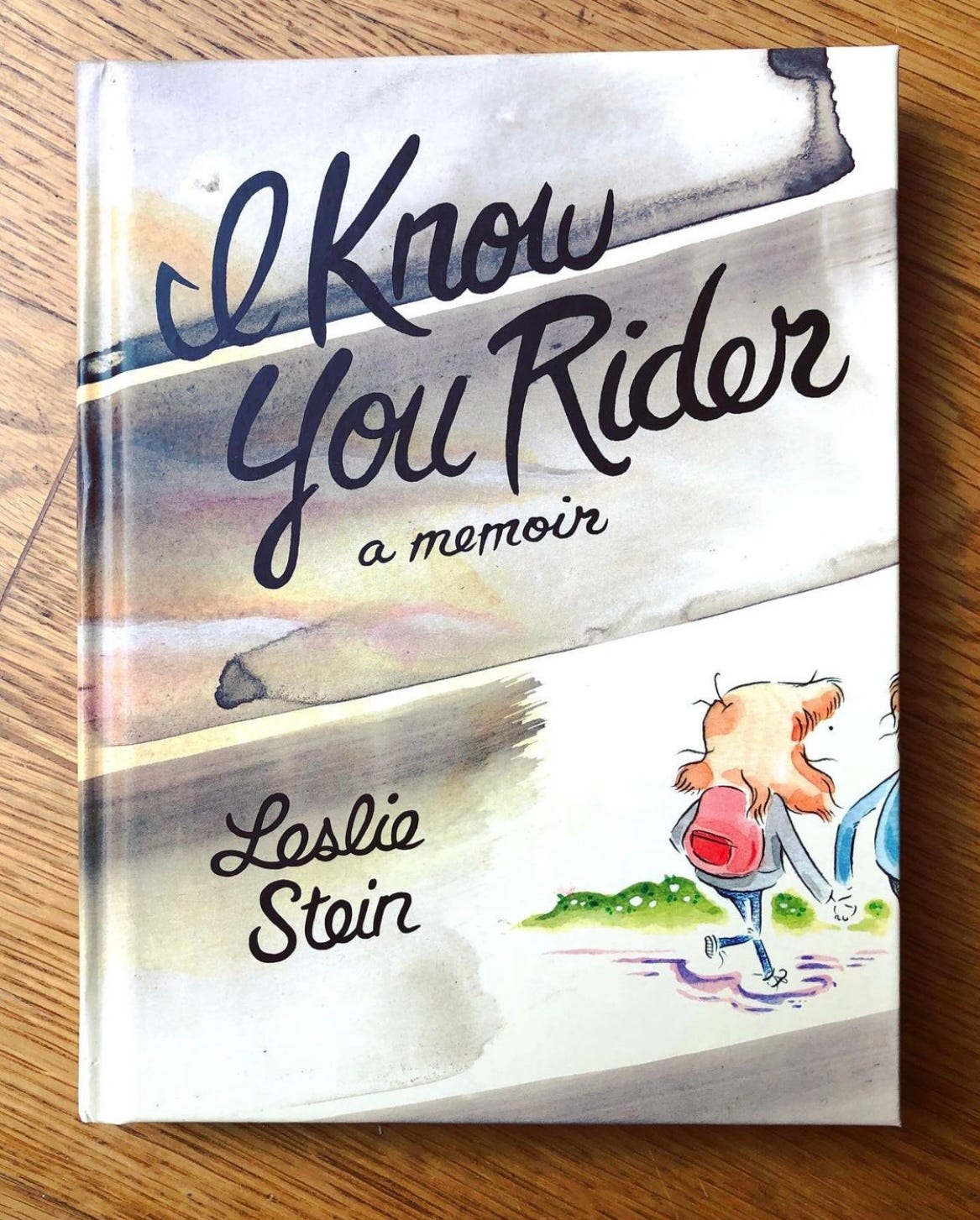
I: We’ve talked about your writing and your art and your music, but can we take a moment to simply talk about your process? One thing I admire about you is how hard you work. Which clearly started when you were a kid—drawing so intensely in kindergarten. Am I right in saying, you don’t have a couch?
LS: My whole life is set up around drawing.
I don't need to be comfortable in my personal space, because art is about being uncomfortable, and I don't need a couch to sit on and watch TV. When I'm not drawing, I should be outside having experiences that will lend themselves to my work. So, I got rid of my couch about eight years ago. Now, during COVID I definitely was thinking, “Ok, this is silly, it’s probably time to get a couch.” But I didn't. So, my living room is basically a drawing table, a record player, my four track, my records, and my guitar.
I: Was that hard during lockdown? Being alone with only your work?
LS: I mean, that’s why I went fictional with Brooklyn's Last Secret. I didn’t want to do an autobiographical graphic novel of me losing my mind in my apartment. I could either sit around and be depressed, or I could figure out something fun to inhabit. So I chose to go on this fun tour with this band of characters that I created, and I’m really happy I did.
Leslie and I leave Judy’s and point ourselves back toward Park Slope. The sun set hours ago, but Sunset Park is bustling with food vendors and crowds of people laughing in the night.
Weeks pass. Leslie and I see each other often, and I learn that she finally got a couch. Not so much “got,” as someone demanded she accept one. “A dear friend of mine asked me if I wanted an old couch he was getting rid of and then sent it over. Transportation paid for and everything. Thats what it took,” Leslie laughs. “I keep forgetting that I have it. ‘Oh yeah, I can go sit on the couch!”
After the Supreme Court’s decision to overturn Roe v. Wade—which happened while I was preparing this edition of Walk It Off—I reach out to Leslie to ask if she has anything she wants to add.
Leslie thinks for a moment, before saying, “I don't have anything unique to say that hasn't been more eloquently said elsewhere. I had incredibly strong feelings the day Roe was overturned, and I immediately put on my shoes and headed to a rally at Washington Square Park. I marched for hours, so maybe that’s what I’ll say. I recommend protesting, for at least the tiniest bit of catharsis.”




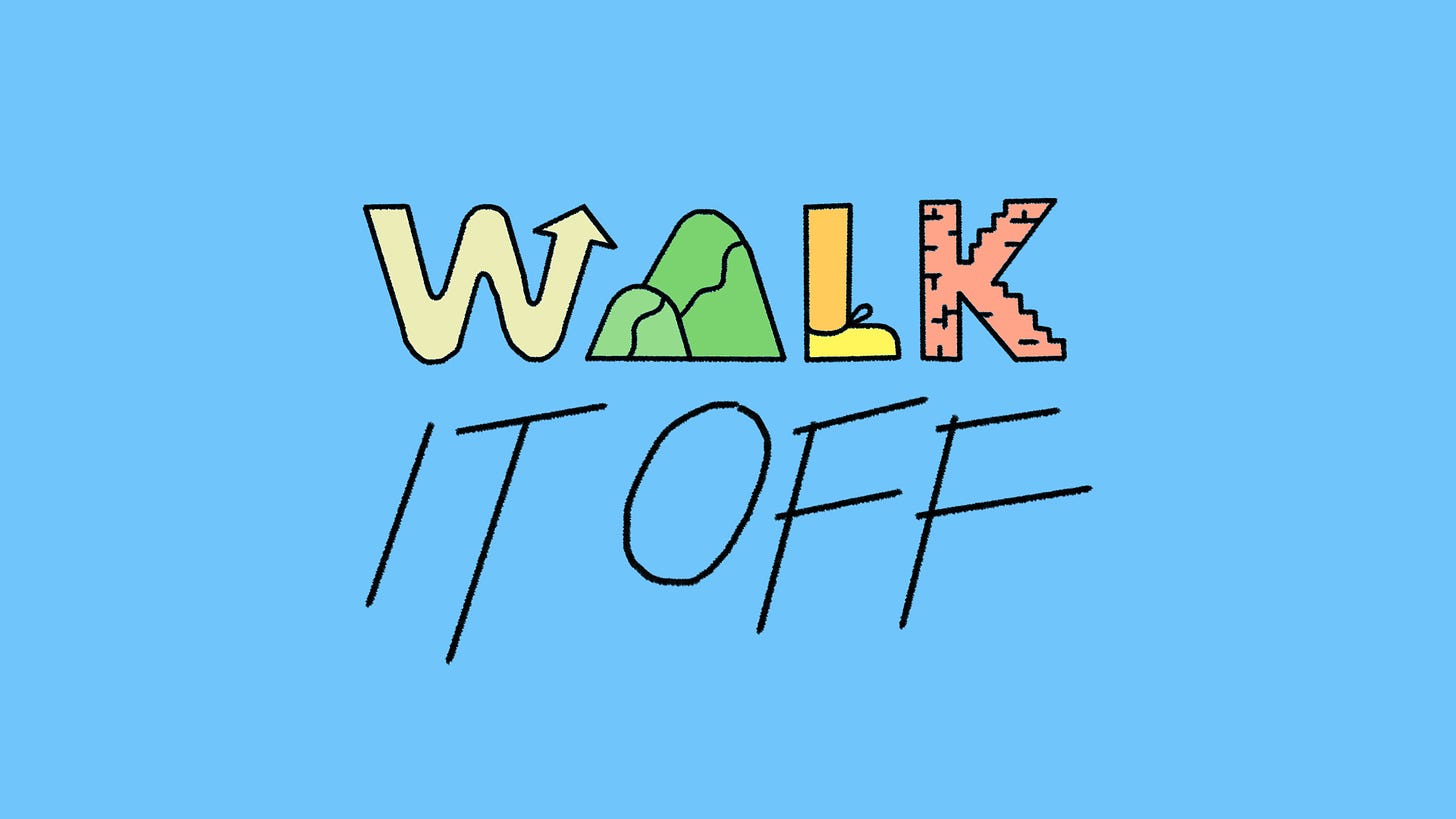
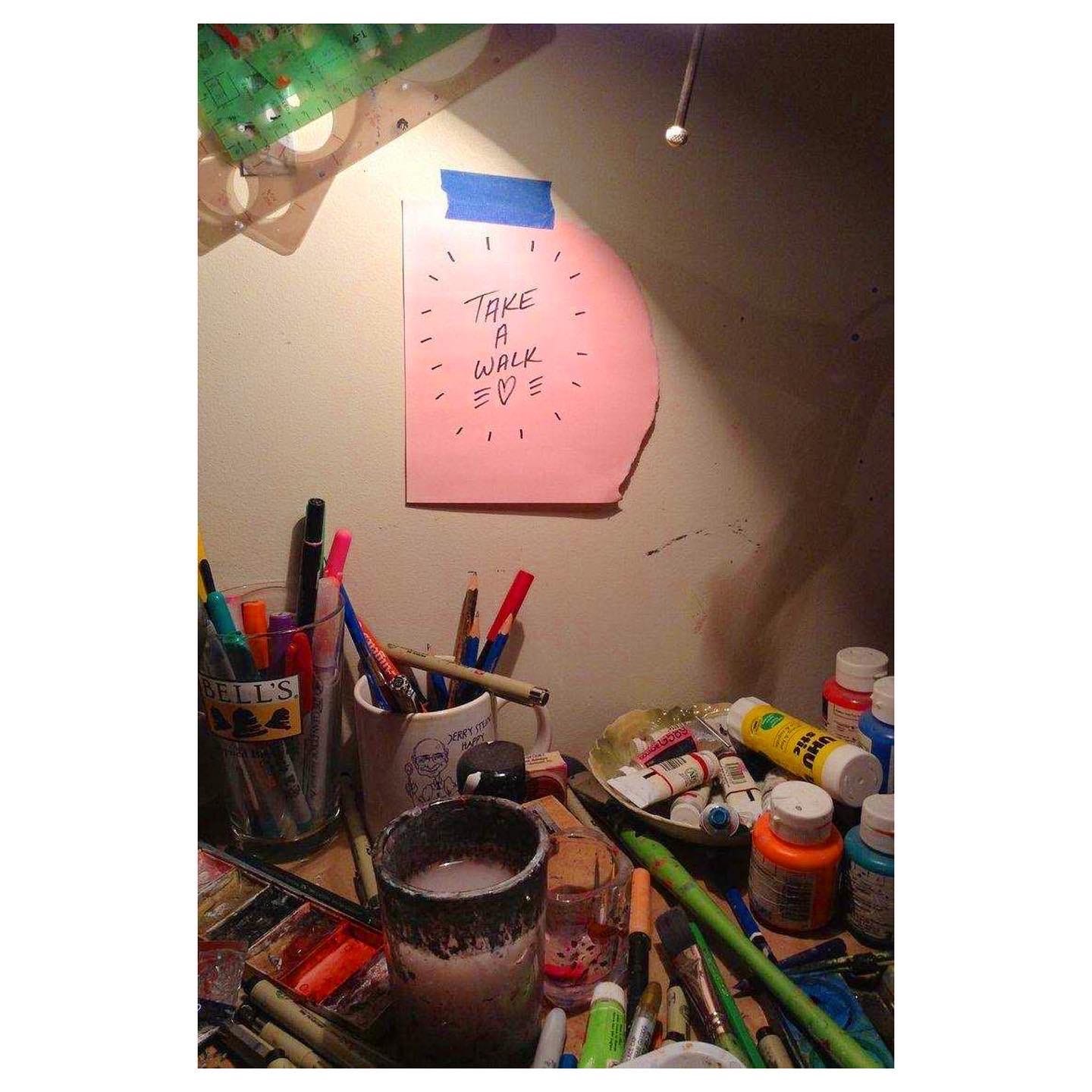




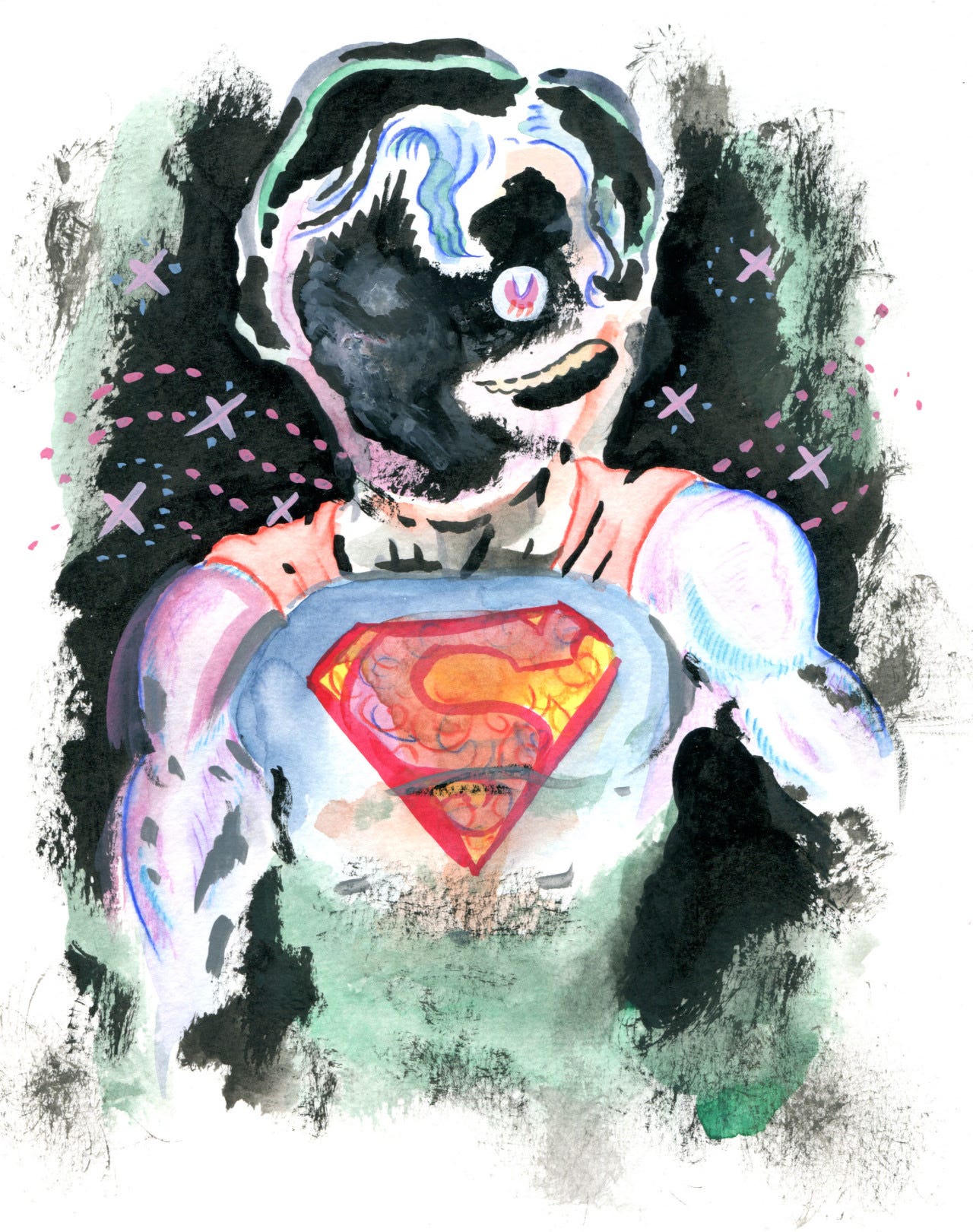
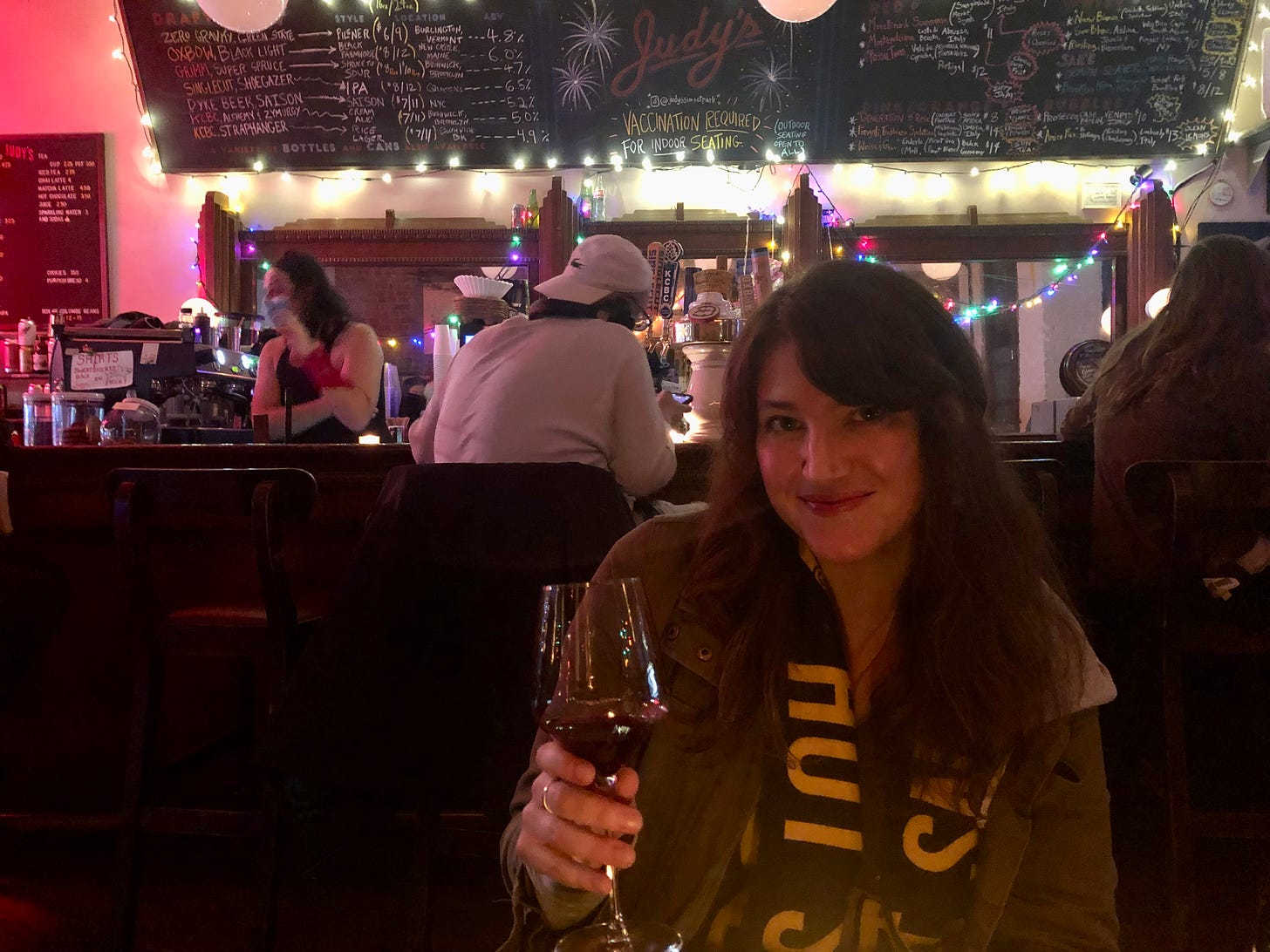

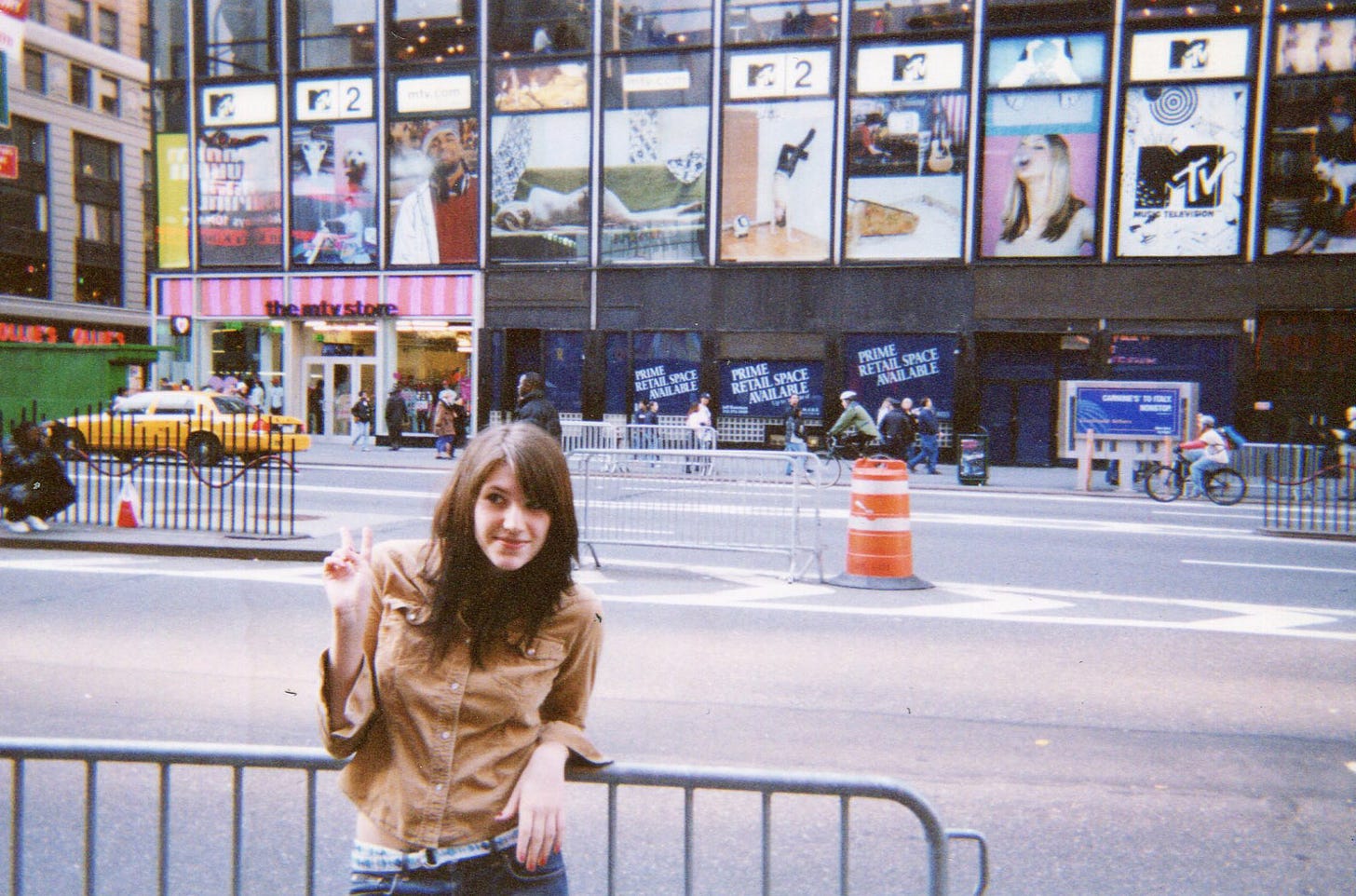
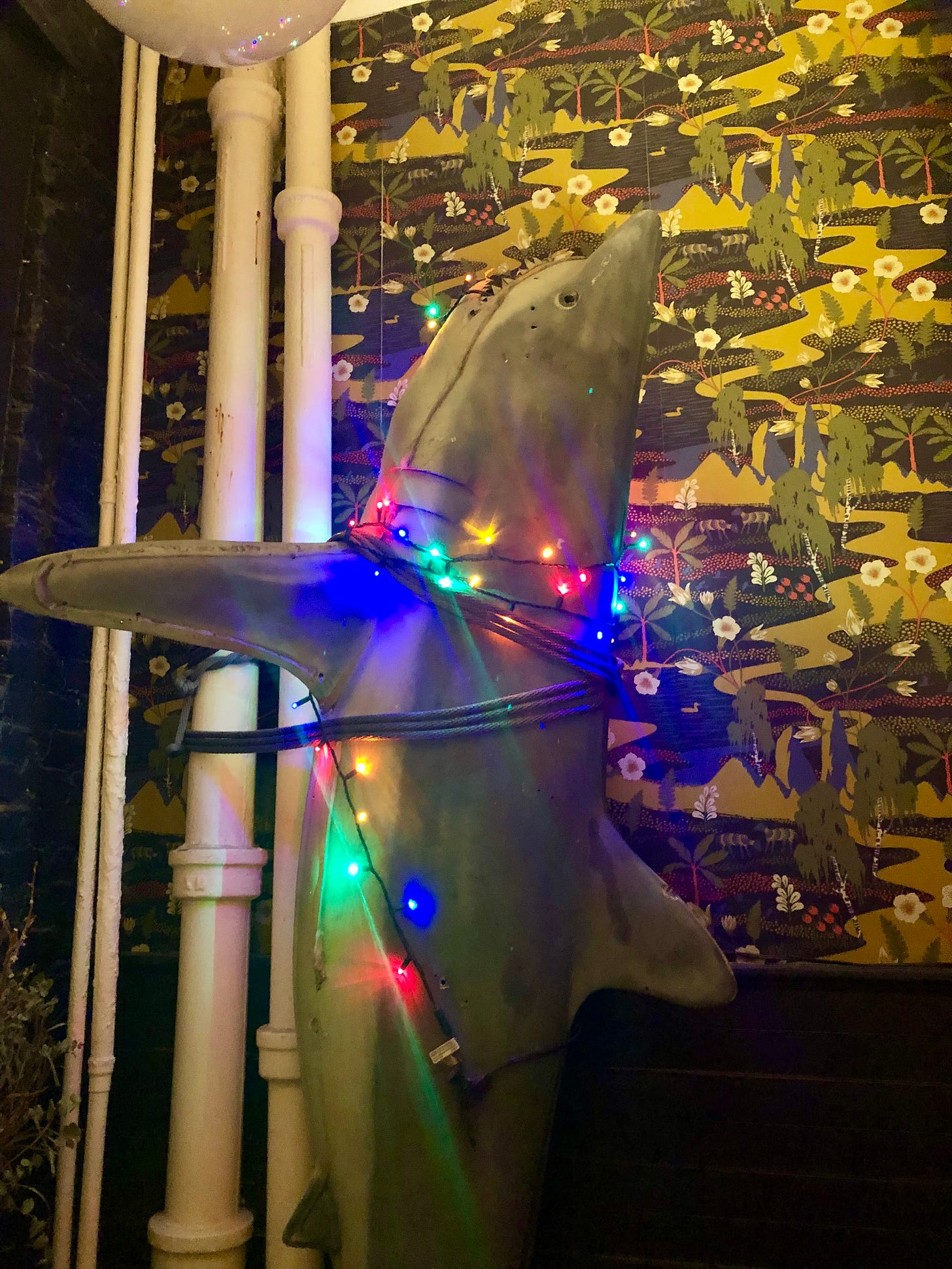
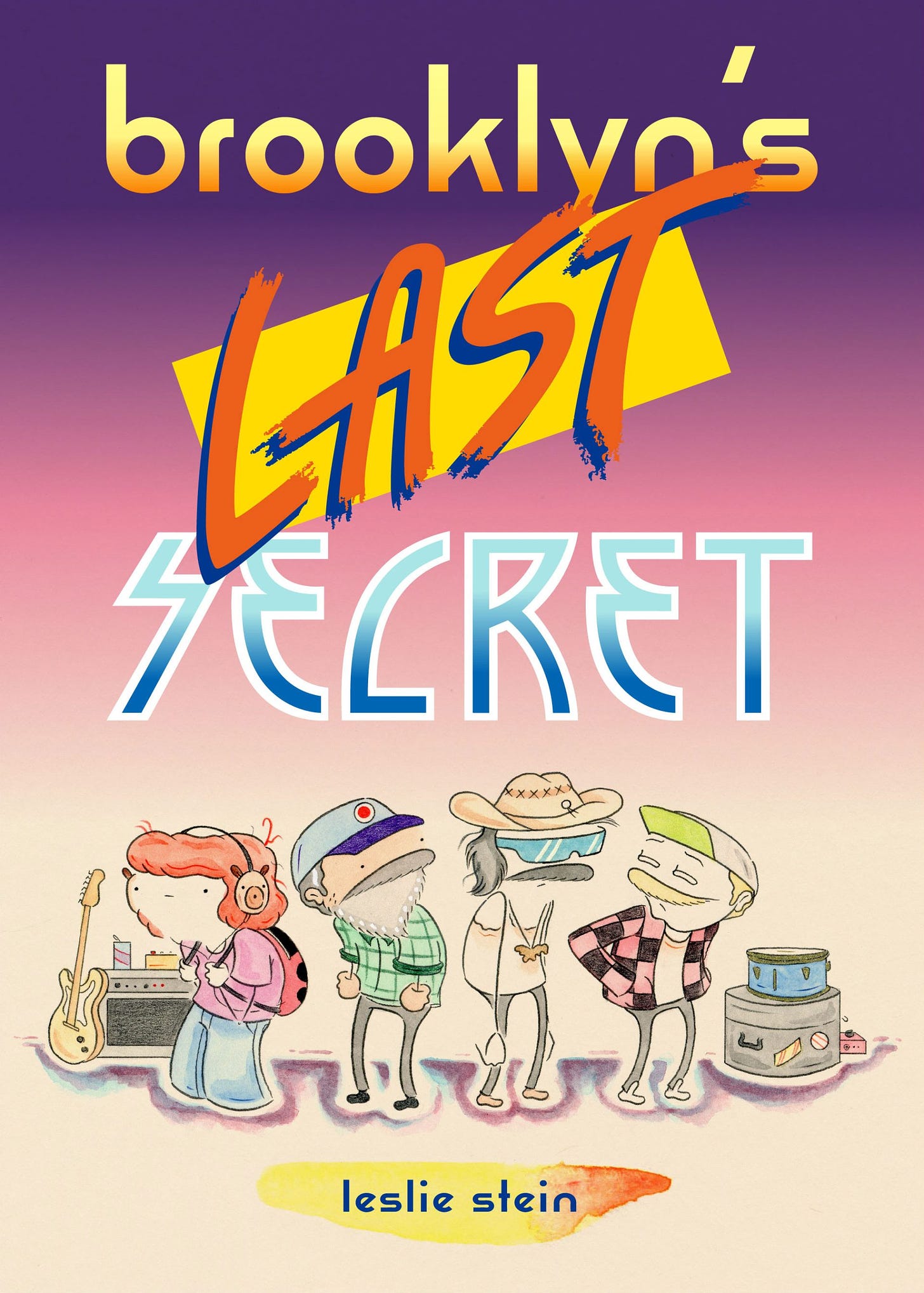

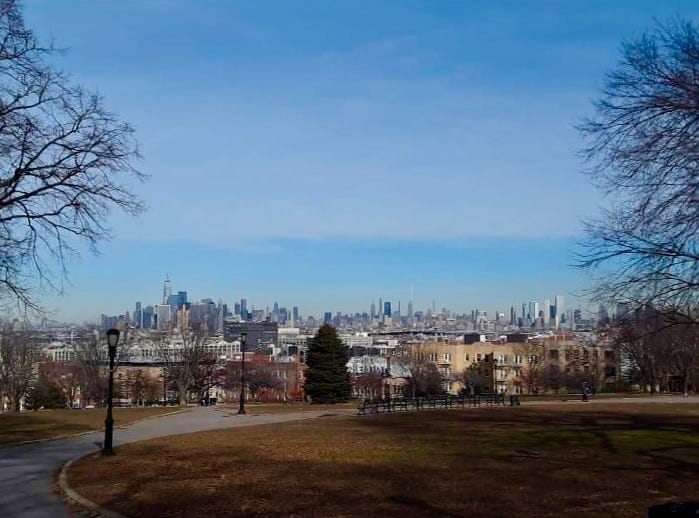
No better conversation to welcome me back to Walk It Off! I've missed this and yup, I still love it.
Very interesting, just ordered the book! I like the sound of it, the stories behind being an artist in real life, thoughts etc - also enjoyed the interview! thank you